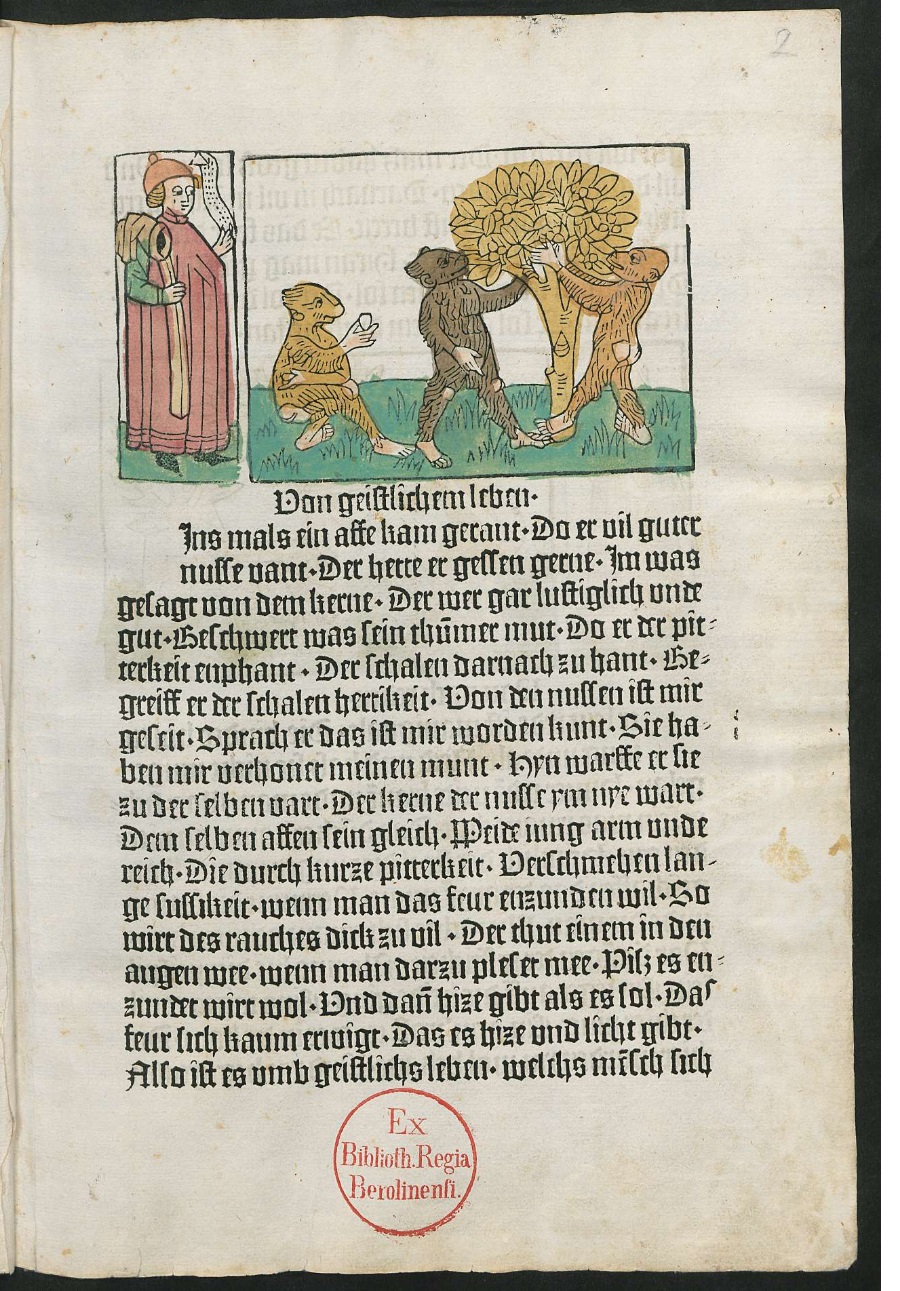Albrecht Pfister on:
[Wikipedia]
[Google]
[Amazon]
 Albrecht Pfister (c. 1420 – c. 1466) was one of the first European printers to use
Albrecht Pfister (c. 1420 – c. 1466) was one of the first European printers to use
digital images of Latin Biblia Pauperum
* {{DEFAULTSORT:Pfister, Albrecht 1420s births 1460s deaths German printers Printers of incunabula Medieval German merchants 15th-century German businesspeople
 Albrecht Pfister (c. 1420 – c. 1466) was one of the first European printers to use
Albrecht Pfister (c. 1420 – c. 1466) was one of the first European printers to use movable type
Movable type (US English; moveable type in British English) is the system and technology of printing and typography that uses movable components to reproduce the elements of a document (usually individual alphanumeric characters or punctuation m ...
, following its invention by Johannes Gutenberg. Working in Bamberg, Germany, he is believed to have been responsible for two innovations in the use of the new technology: printing books in the German language, and adding woodcuts
Woodcut is a relief printing technique in printmaking. An artist carves an image into the surface of a block of wood—typically with gouges—leaving the printing parts level with the surface while removing the non-printing parts. Areas that ...
to printed books. The typefaces
A typeface (or font family) is the design of lettering that can include variations in size, weight (e.g. bold), slope (e.g. italic), width (e.g. condensed), and so on. Each of these variations of the typeface is a font.
There are thousands o ...
of Pfister, although similar to Gutenberg's, have their own peculiarities.
Very little is known of his life. He is known to have been a cleric in Bamberg in 1448, and to have been connected with Georg I von Schaumberg at that time. By 1460 he was acting as secretary to von Schaumberg, who in 1459 had become prince-bishop of Bamberg.
Nine editions are generally ascribed to him. All are believed to date to the 1460s, and possibly all to the early 1460s. These are (not in chronological order):
* two editions of the popular religious work ''Der Ackermann aus Böhmen
''Der Ackermann aus Böhmen'' (German for "The Ploughman from Bohemia"), also known as ''Der Ackermann und der Tod'' ("The Ploughman and Death"), is a work of prose in Early New High German by Johannes von Tepl, written around 1401. Sixteen manu ...
'' in German
* two editions of Ulrich Boner's ''Der Edelstein'' in German
* two editions of a Biblia pauperum
The (Latin for "Paupers' Bible") was a tradition of picture Bibles beginning probably with Ansgar, and a common printed block-book in the later Middle Ages to visualize the typological correspondences between the Old and New Testaments. Unlike ...
in German
* a Biblia pauperum in Latin
* a ''History of Joseph, Daniel, Judith and Esther'' in German
* an edition of the ''Belial'' of Jacobus de Teramo Jacobus Palladinus de Teramo (1349–1417), a member of the powerful family of Palladini, was an Italian canon lawyer and bishop. His birthplace, Teramo, was then part of the Kingdom of Naples (now in the Italian region of Abruzzo).
Life
After s ...
in German
The earlier edition of the ''Ackermann'' may have been his first work, and thus both the first illustrated book, and the first book in German, printed with movable type. Its woodcuts are rather crude, are hand-coloured, and are occasionally slightly missplaced on the page. The ''Belial'' is the only one of the nine books without woodcut illustrations. Only two of the editions have dates printed in them: the earlier of the two Edelsteins (1461) and the ''History'' (1462). Like other very early printers, he concentrated on titles which had already proved popular in manuscript
A manuscript (abbreviated MS for singular and MSS for plural) was, traditionally, any document written by hand – or, once practical typewriters became available, typewritten – as opposed to mechanically printed or reproduced in ...
form. He also printed indulgence
In the teaching of the Catholic Church, an indulgence (, from , 'permit') is "a way to reduce the amount of punishment one has to undergo for sins". The ''Catechism of the Catholic Church'' describes an indulgence as "a remission before God of ...
s.
In addition he has been suggested as the printer of the 36-line Bible
The 36-line Bible, also known as the "Bamberg Bible",British Library/ref> (and sometimes called a "Gutenberg Bible") was the second moveable-type-printed edition of the Bible. It is believed to have been printed in Bamberg, Germany, circa 1 ...
of 1458-60. This view has not been favoured by scholars for a century or so, principally because of the superior quality of the Bible's printing, especially compared with Pfister's earliest productions. However the Bible was probably printed in Bamberg, with the D-K type which Pfister later made use of, and which had originated with Gutenberg.
See also
* IncunableNotes
External links
digital images of Latin Biblia Pauperum
* {{DEFAULTSORT:Pfister, Albrecht 1420s births 1460s deaths German printers Printers of incunabula Medieval German merchants 15th-century German businesspeople